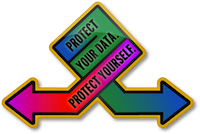If you’re a regular reader of this blog, you’ll probably recall that I wasn’t too keen on the Canadian Wireless Telecommunications Association (CWTA)’s plan to create a database of blacklisted cell phones. For several reasons, I thought this was more stupid than smart. Today, I learned that the same database has progressed far enough that the general public can run lookups using IMEI numbers. While the database is still a waste of money, being able to find out more on a blacklisted device is, at least, a good thing.
The process of finding out if your phone is blacklisted [1] involves going to protectyourdata.ca and look for the “Check your IMEI number” link. When you get to that page, supply a number without spaces and punctuation, and you’ll see if the device has been blacklisted. Here’s what the output of a non-blacklisted device looks like.
Looking closer at the fine print reveals that the database is little more than a novelty. They say that devices may still be blocked even though not in the database. They also mention that the database may not be updated for up to 48 hours, stopping short of declaring possible inaccuracies in the various carriers handling of the information.
Do I think very many will demand an online seller reveal an IMEI just to take the information to this database? Not at all. In fact, very little trust has been established here, and it’s an important responsibility of buyers to assess the seller’s legitimacy. This is might just end up being relegated to a searchable database for those with blocked phones looking for answers. Yes, that’s about it.
And, the question is, what information is revealed? Will details on a blocked phone provide users with the ability to remediate the problem? Is the site going to provide nothing but “your blocked”, and then forward the IMEI and your IP address to law enforcement? How would we know for sure?
There is a reason why no other country offers such a service. This is because it doesn’t work. Theft is a growing concern, with smartphones becoming more expensive, smaller, and easier to spot [2]. It may be true that this service has the right intentions, but it falls far short of actually protecting users. A better way to protect users may be offering a service similar to Ontario’s “Used Vehicle Information Package”, allowing possible buyers to see a device’s history, possible contract status and any unpaid past bills. That’s something I’d get behind.
An important thing to note is that carriers don’t want devices on a blacklist [3]. A blocked device earns them no money, creates an unnecessary administrative burden and forces them to find ways to incorporate these costs into our bills. So, you can expect them to update this as slow as humanly possible, if at all. That’s what I’d call an expensive novelty; who do you think pays for this system?
1. Let’s face it, this database is really for smartphones and, more specifically, non-CDMA iPhones
2. Gold, anyone?
3. No, seriously. These companies operate for-profit.
